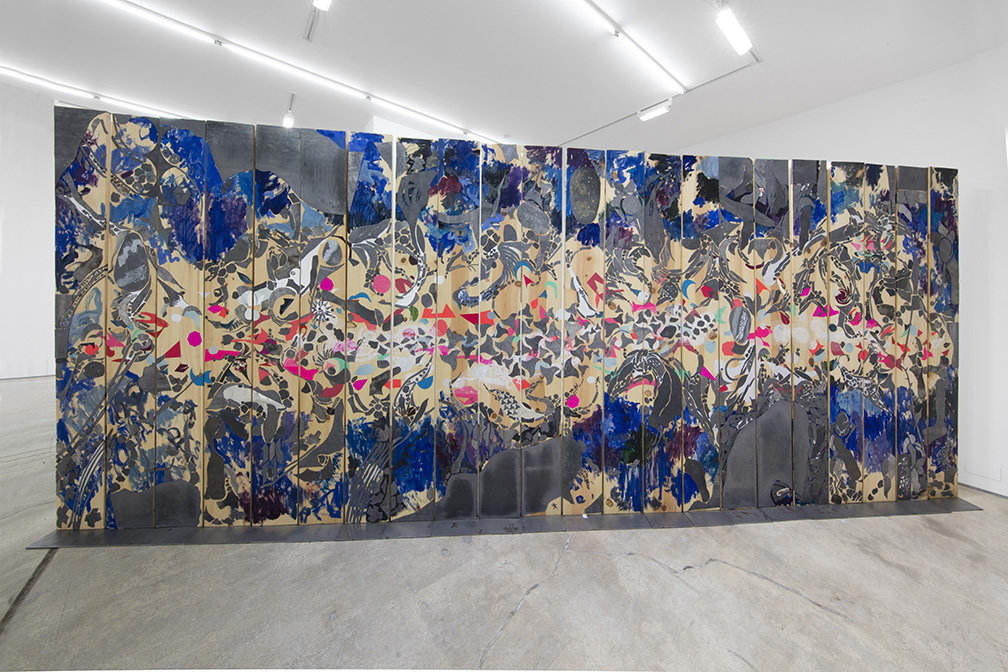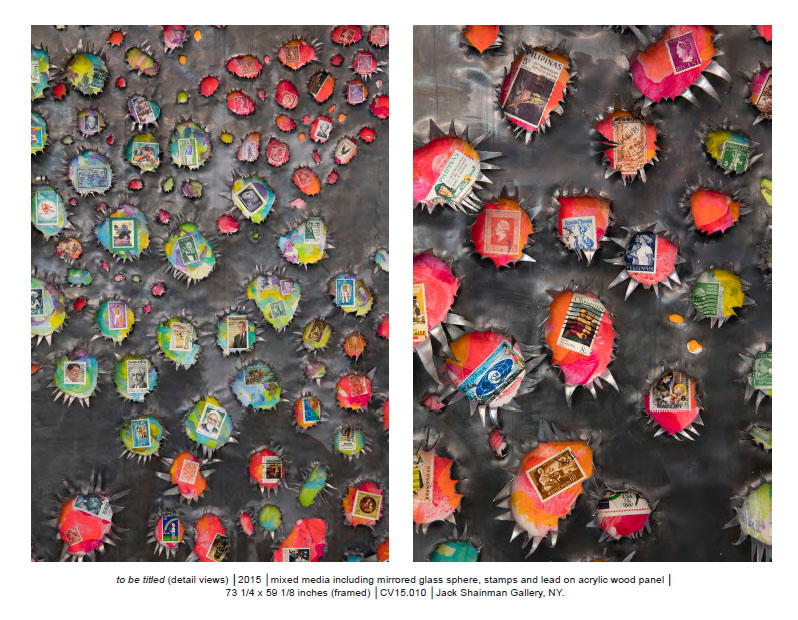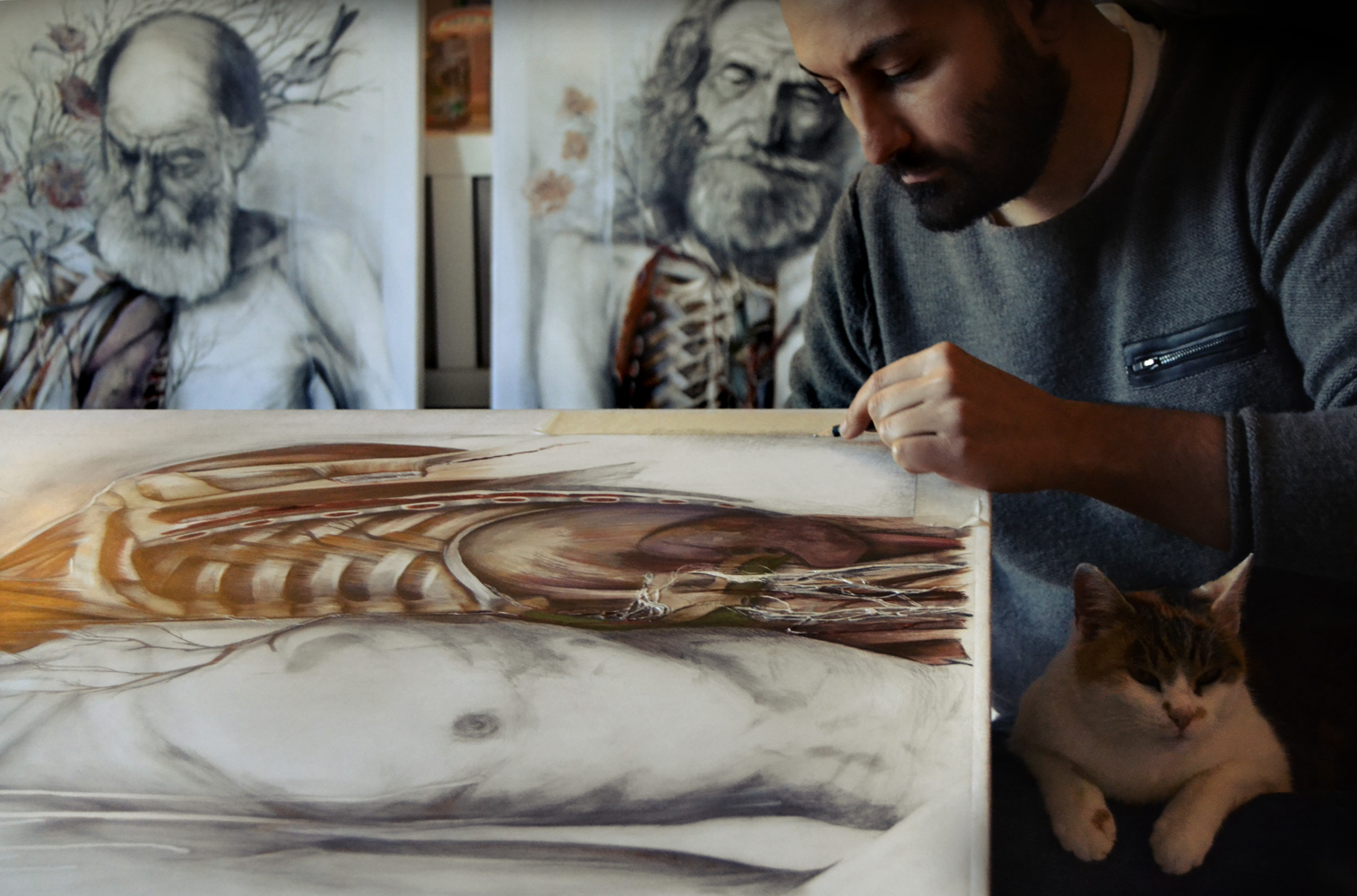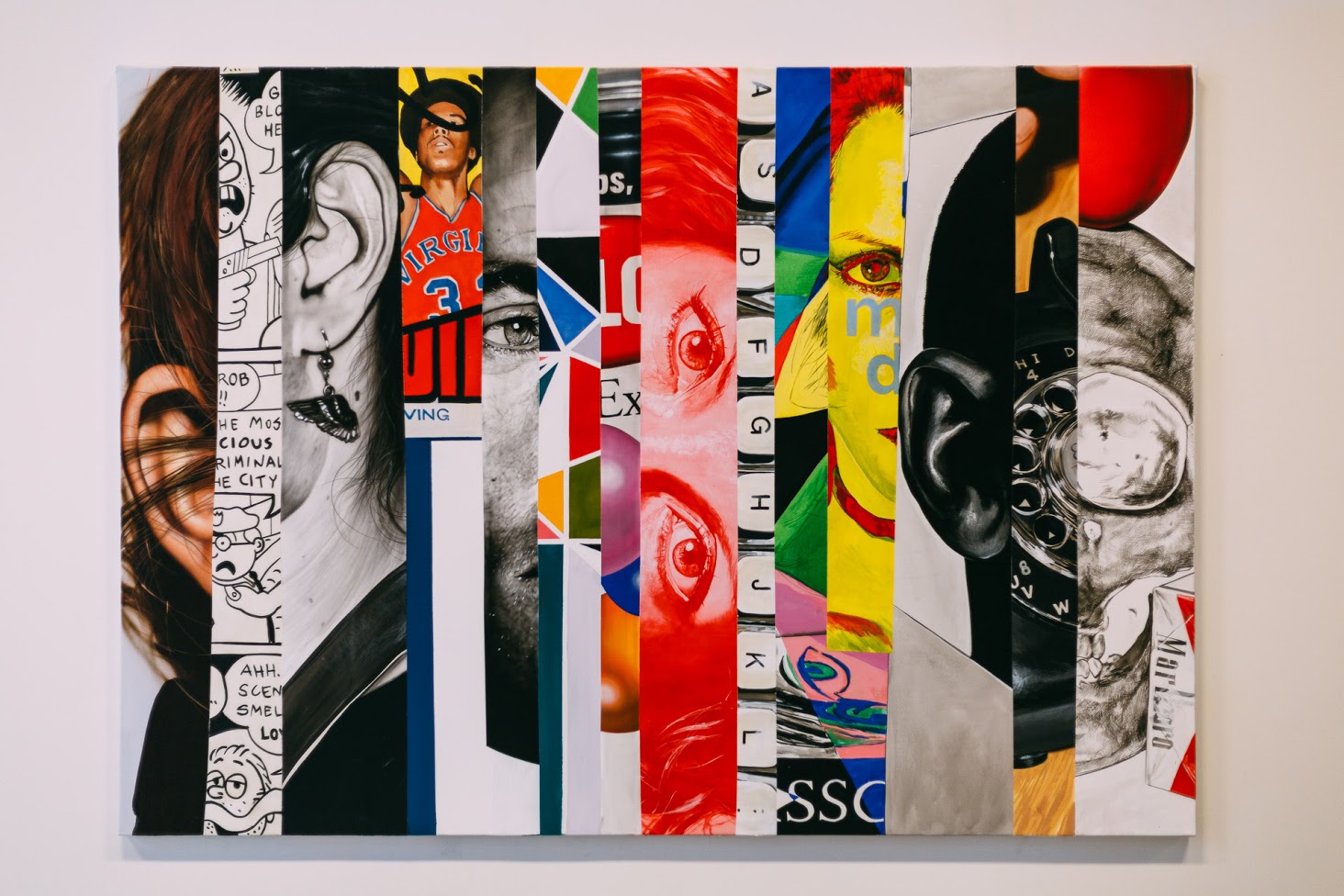
Carefully treated sheets of poisonous lead are punctured to reveal vibrant cosmoses made from stamps of Mickey Mouse and Benazir Bhutto, as if bright bursts of consciousness are exploding through cold, metallic reality. Over the last decade Carlos Vega has perfected the technique of overlaying mixed media collages with etched and perforated lead sheets to create relief-paintings. But Vega’s preoccupation with the human condition, religious enlightenment, and historical documentation dates back much further to 1990 when the 20-year-old artist first left Spain for the U.S.
Vega’s latest works are on view at his longtime New York dealer Jack Shainman’s newest Chelsea outpost in the show Faith Need Not Fear Reason. The ten works, all created this year, include the artist’s most refined lead pieces, as well as more experimental works such as drawings on UV window film and 21-foot wooden walls. We caught up with Vega to discuss 12th century Spanish intellectuals, donkeys, and how awful artists really are.
Art Report: How long have you been working with lead, and what draws you to the medium?
Carlos Vega: I’ve always been interested in lead. As a little child I used to collect lead pellets with my brother, melt them and turn them into things. I’ve been using lead in my art since 1987, but eight years ago I had a dream about making something really big with lead. I think humans have this magnetic attraction towards lead. Its surface, like a pearl, has a natural iridescence.
AR: The gallery show, Faith Need Not Fear Reason, explores history and society’s evolution into a more enlightened form. Why do you use stamps to illustrate these ideas?
CV: I use stamps because they document the history of the last140 years that is how long they’ve existed. Stamps are a snapshot, a square inch of graphic design that capture the aesthetic and ideals of the time in which they were produced.
AR: Do you have any favorite stamps from the ones included in the show’s artwork?
CV: I love stamps from the 1970s, when people were becoming idealistic and progressive. There are stamps that advise giving to the poor, energy conservation, alcoholic therapy, and environmental awareness. All these things first bubbled to the surface in the 1960s and 1970s. Even in our lifetimes society has evolved so much, this progression can be read through stamps. We are on this inexorable path to a more enlightened society.
AR: The gallery show was inspired by three intellectuals: the Islamic polymath Averroes, Jewish scholar Maimonides, and King Alfonso X “The Wise.” These men coexisted, for a brief time in 12th century Spain and created a truly enlightened society. Who are the modern day counterparts of these three intellectuals?
CV: For the oppressed I think it would be Martin Luther King, and maybe Barack Obama. But I really think Malala Yousafzai can change the world. That is why I made that piece about her.
The piece about Malala, Ziauddin’s Pride 2015, is punctuated with stamps of powerful women from Oprah Winfrey to Queen Victoria. Why did you use these particular stamps?
It is wonderful to see stamps illustrate women’s rise into civil society. In the beginning of the 20th century Mrs. George Washington was the only woman on stamps. Women didn’t become visible till around the Second World War. In general I think women should hold more powerful positions in society. It creates a counterbalance. Men don’t think the same way as women do.

AR: How do men and women think differently?
CV: They have different priorities. Man’s priority is to win and conquer, woman’s is to coexist and prosper. Girls today have forgotten their great grandmothers fought their fathers, brothers, and husbands so women could vote. Women still struggle throughout the world, especially in the Middle East and South Asia. Malala is liberating women in those regions, so they can break from oppressive social and religious systems.
AR: The donkey is the central image of Averroes, 2015. The animal seems to recur in your art in pieces including Don’t Tell Me You Can’t (2012), My Practice (2007) and other works. What do donkeys symbolize?
CV: Until I was 20-years-old and left Melilla, I saw donkeys on a daily basis. They were always in front of my house carrying and moving things. Spanish artists love donkeys because they are a metaphor for the human condition.
Like donkeys we don’t learn, we are blind to what causes us trouble, we make the same mistakes, and we spend this life working every day. We have to be more than that.
AR: Even though your work comments on humanity today, it is steeped in history. Does this yearning for a former place come from being an immigrant?
CV: When you leave your country and go abroad you carry around this difference. There is that sense of not being fully understood, and having all this other knowledge nobody can see but you. So yes, I draw from my past.
AR: Your recent works have a more abstract bent, compared to your previous figurative works. They also explore different formats and mediums. What inspired you to diverge from your trademark style?
CV: I always try and catch my viewer’s eye. Artists are awful like that: we want to keep people’s eyes attached to what we just made, so we use tricks. From this desire to be eye catching I’ve experimented with different techniques. I try and seduce the viewer in every possible way.
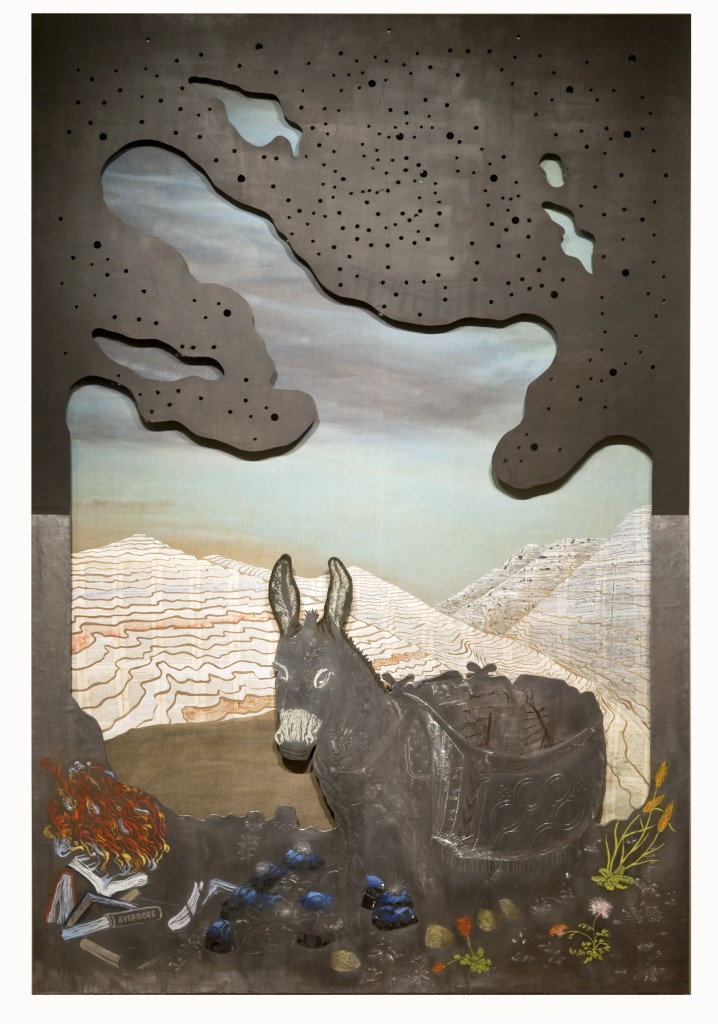


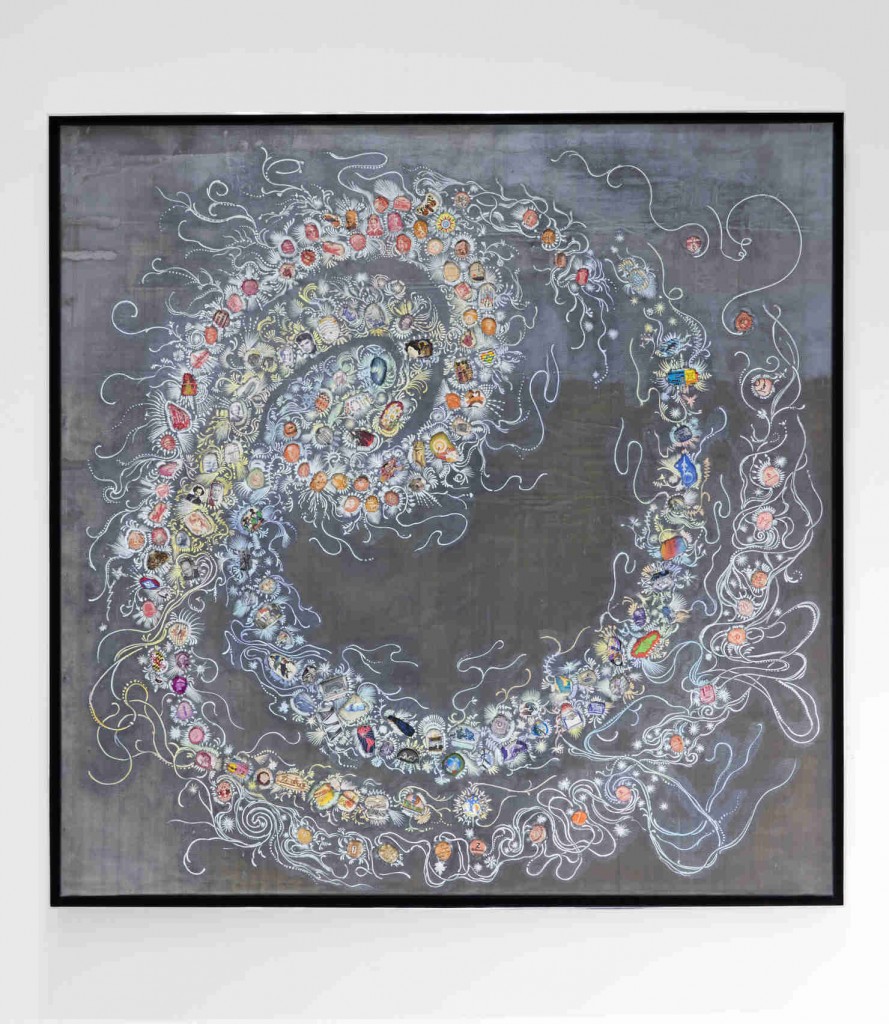


Faith Need Not Fear Reason is on view at Jack Shainman Gallery until Dec 5, 2015. All images courtesy of the artist and Jack Shainman Gallery.
Like this article? Check out the Intimacy in Discourse show at Mana Contemporary which discusses artist’s choice of scale, and other artist interviews.


